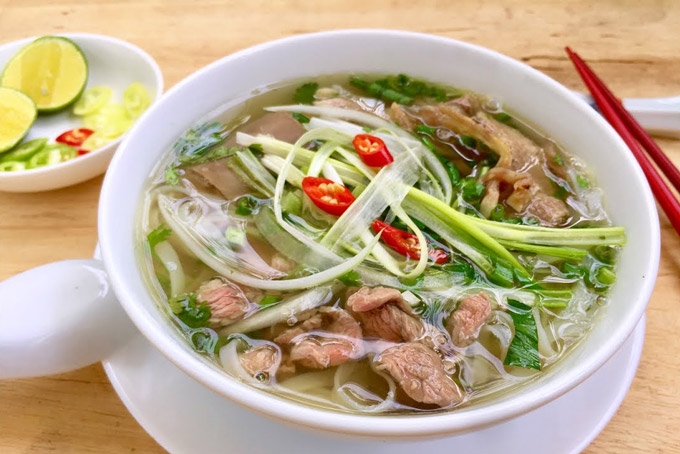Northern Pho vs. Southern Pho: Exploring the Regional Variations of Vietnam's Beloved Noodle Soup
Pho, the iconic Vietnamese noodle soup, has gained international recognition for its rich flavors and comforting appeal. However, what many people may not realize is that pho can vary significantly depending on the region in Vietnam. The country's northern and southern regions, in particular, have their own unique takes on this beloved dish. Let's delve into the differences between Northern Pho and Southern Pho, exploring their distinct characteristics and flavors.
Northern Pho, also known as Pho Bac, is believed to be the original version of pho. It originates from Hanoi, the capital city of Vietnam. Northern Pho is known for its simplicity and delicate balance of flavors. The broth is clear and light, typically made by simmering beef bones, roasted ginger, and onion for several hours. The slow-cooking process extracts the essence of the ingredients, resulting in a subtly aromatic and refined broth.

(Northern Pho)
The noodles in Northern Pho are generally wider and softer compared to their Southern counterpart. The texture allows them to absorb the broth and other flavors more easily. Northern Pho often features thinly sliced rare beef or beef brisket, cooked by pouring the hot broth over the meat. The garnishes include spring onions, cilantro, and sometimes a squeeze of lime. The simplicity of the dish allows the natural flavors to shine through.
In contrast, Southern Pho, or Pho Nam, originates from Ho Chi Minh City (formerly known as Saigon) and the southern provinces of Vietnam. Southern Pho is known for its heartier and bolder flavors. The broth is darker and more robust, often achieved by adding spices such as star anise, cinnamon, cloves, and cardamom. The broth is typically sweeter, thanks to the addition of rock sugar or hoisin sauce, which gives it a slightly caramelized taste.

(Southern Pho)
The noodles in Southern Pho are thinner and chewier, providing a different textural experience. This type of pho often includes a wider variety of meat options, such as beef balls, tendon, tripe, and thinly sliced flank steak. The meat is usually cooked directly in the broth, allowing it to absorb the flavors more intensely. Southern Pho is also accompanied by a wider range of fresh herbs and condiments, including bean sprouts, Thai basil, sawtooth herb, lime wedges, and chili sauce. These additional elements contribute to the complexity and depth of flavors in each bowl.
The regional variations of pho are not limited to the broth and noodle components. The way it is enjoyed also differs between the north and the south. In the northern region, pho is often eaten for breakfast and served with a side plate of fresh herbs, bean sprouts, and lime wedges. The emphasis is on the purity of flavors, allowing the diner to customize their bowl to their liking. In the south, pho is commonly eaten as a hearty meal at any time of the day, with a wide array of condiments and herbs directly added to the bowl. The experience is more vibrant and all-encompassing.
Both Northern Pho and Southern Pho have their own distinct charm and culinary appeal. The variations in flavors, ingredients, and presentation reflect the diverse regional influences within Vietnam. Whether you prefer the delicate refinement of Northern Pho or the bold complexity of Southern Pho, one thing is certain: pho is a dish that embodies the essence of Vietnamese cuisine and culture.
In conclusion, the differences between Northern Pho and Southern Pho highlight the rich culinary heritage of Vietnam. While Northern Pho embodies simplicity and elegance, Southern Pho boasts bold flavors and a wider range of ingredients. Whichever style of pho you choose, be prepared for a delightful culinary journey that showcases Vietnam's vibrant gastronomic scene.